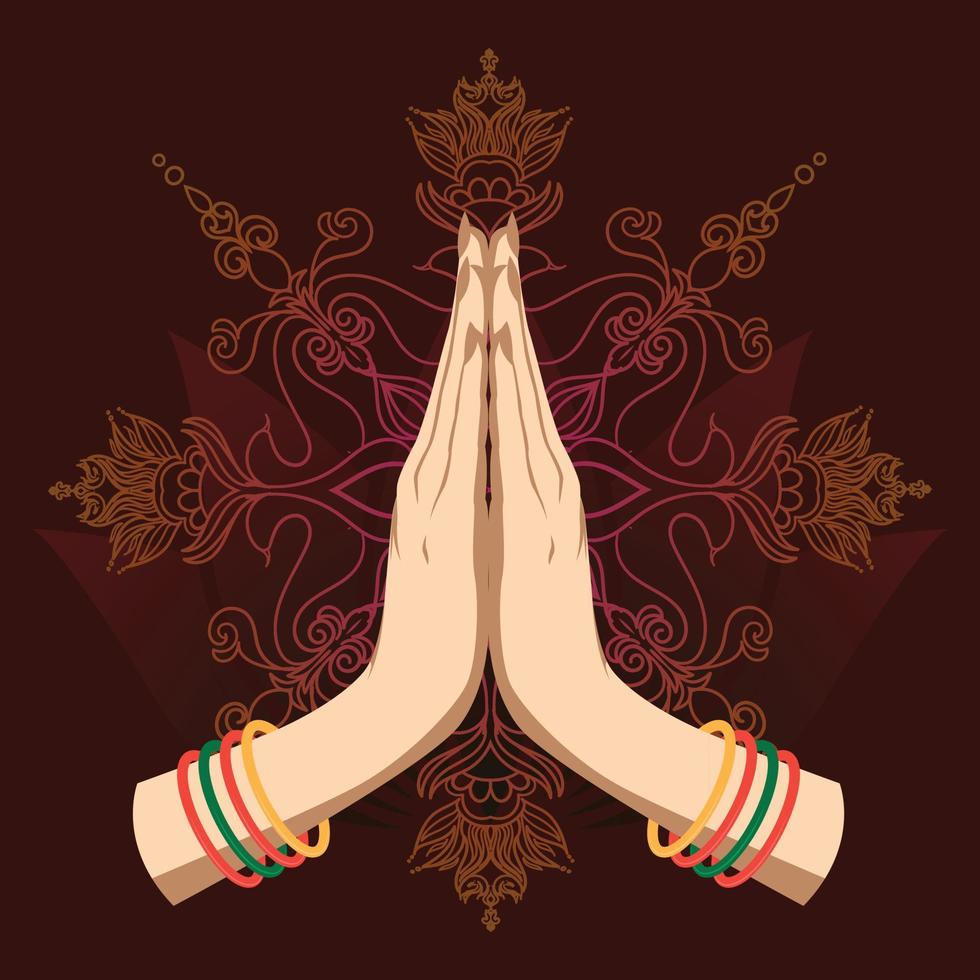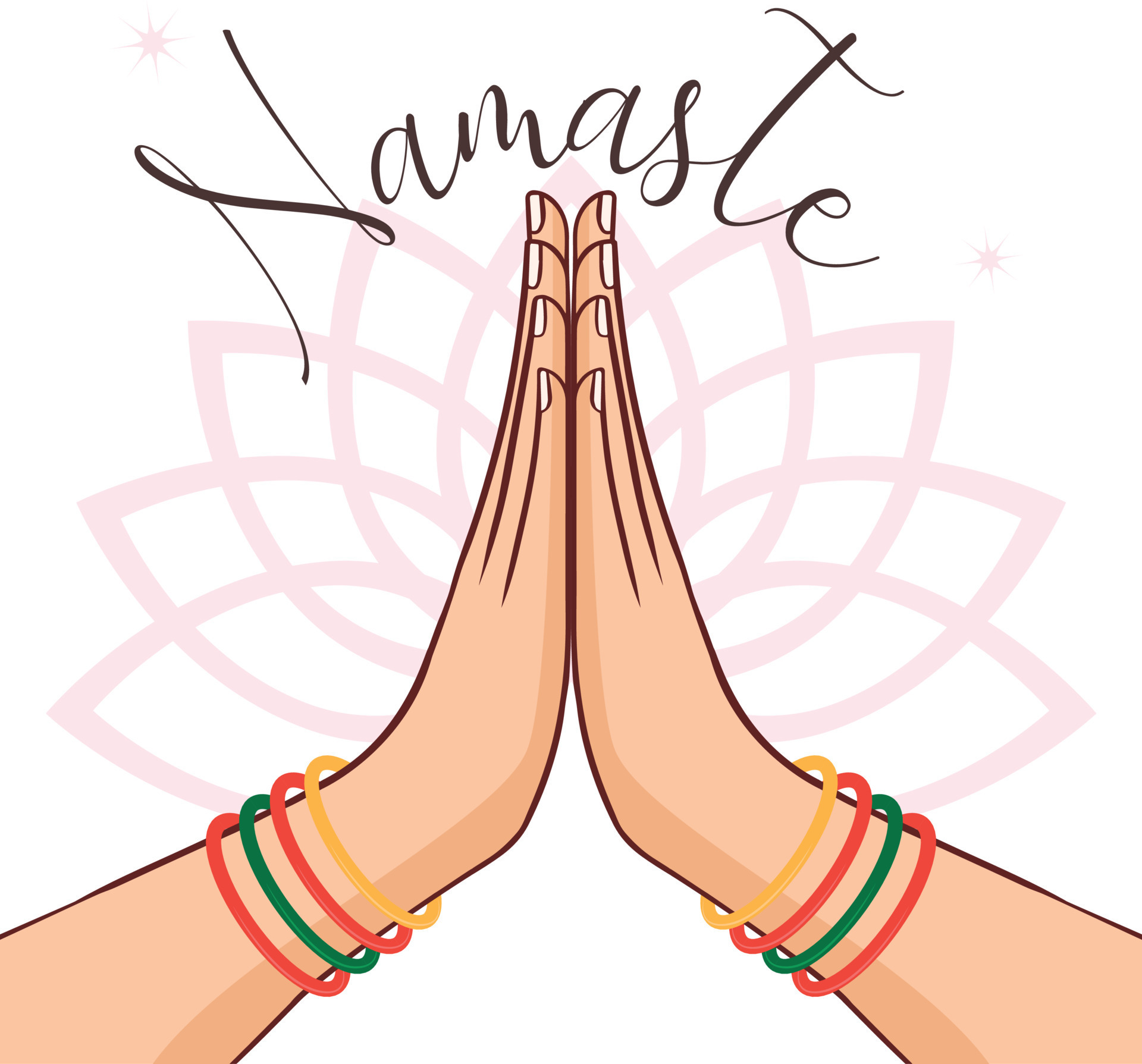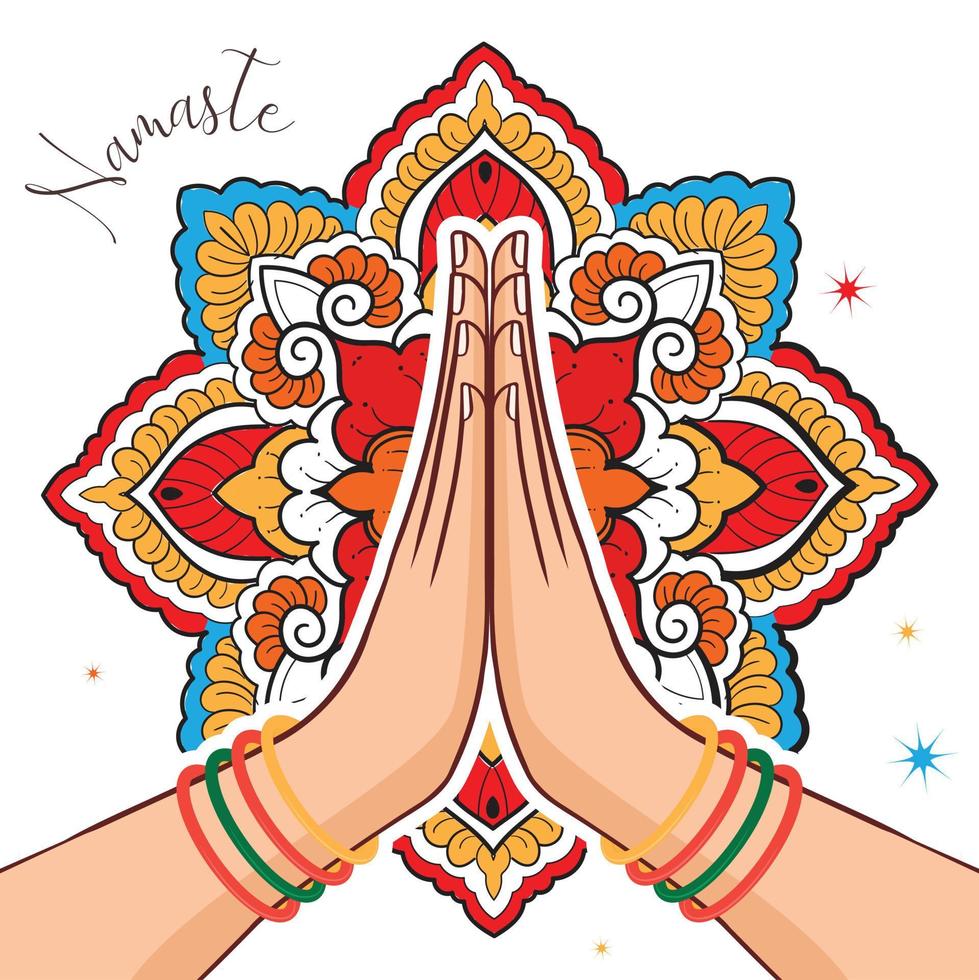Unlocking Namaste Meaning: More Than Just A Greeting
In a world increasingly interconnected, certain words and gestures transcend cultural boundaries, finding new homes and interpretations far from their origins. Among these, "Namaste" stands out. Often seen accompanying a gentle bow with palms pressed together, this seemingly simple gesture carries a profound depth that many are only just beginning to explore. Understanding the true namaste meaning is not merely about learning a translation; it's about delving into a rich tapestry of spiritual, cultural, and philosophical insights that have shaped millions for centuries.
Far from being a casual salutation, Namaste is an invitation to acknowledge and honor the inherent divinity and interconnectedness that binds all beings. Its roots are deeply embedded in Sanskrit, the ancient language of India, and its practice is a cornerstone of Hindu tradition. This article aims to unpack the layers of significance behind Namaste, guiding you through its linguistic origins, cultural context, and the powerful spiritual message it conveys, ensuring a comprehensive grasp of its true essence.
Table of Contents
- The Etymology of Namaste: Deconstructing the Sanskrit
- Beyond Words: The Anjali Mudra and Its Significance
- Namaste in Hindu and Indian Culture: A Timeless Tradition
- The "Divine Within" Interpretation: A Core Philosophy
- Namaste as a Concept of Interconnectedness
- Practicing Namaste: From Gesture to Intention
- The Global Spread of Namaste: Understanding Its Nuances
- Preserving the Authenticity of Namaste Meaning
The Etymology of Namaste: Deconstructing the Sanskrit
The journey to truly grasp the **namaste meaning** begins with its linguistic origins. Namaste is not a single word, but rather a compound Sanskrit phrase, a beautiful amalgamation of two distinct components: "Namah" and "Te." This linguistic breakdown is crucial because it immediately reveals the profound intention embedded within the greeting, moving it far beyond a simple "hello" or "goodbye." Sanskrit, often referred to as the "language of the gods," is an ancient Indo-Aryan language with a rich history, forming the basis for many Indian languages and religious texts. Its words are often imbued with multiple layers of meaning, reflecting deep philosophical concepts. Namaste is a prime example of this linguistic richness, encapsulating a complex idea in a concise form. When we dissect "Namaste," we uncover an act of profound respect and recognition. It’s a verbal and physical acknowledgment that transcends the superficial, reaching into the spiritual core of interaction. Understanding these individual components is the first step in appreciating the full weight and beauty of the **namaste meaning**.Namah: Bowing with Reverence
The first part of the phrase, "Namah" (नमः), is incredibly rich in its implications. It translates to a spectrum of terms that all point towards an act of profound deference and humility. These include "praise," "honor," "bowing," "reverential salutation," and "adoration." At its heart, "Namah" signifies a surrender of the ego, an act of humility where one acknowledges something greater than oneself. This "bowing" is not necessarily a physical prostration, though it can be accompanied by one. More fundamentally, it represents a bowing of the mind and spirit. It's an internal posture of respect and recognition, acknowledging the inherent worth and sacredness of the person or entity being greeted. In the context of Namaste, this "Namah" is directed outward, towards the individual standing before you, signifying a deep respect for their being. It’s a recognition of their existence, their journey, and the divine spark within them. This initial component sets the tone for a respectful and conscious interaction, making the **namaste meaning** inherently about honoring the other.Te: Addressing the Divine Within
The second part of the phrase, "Te" (ते), is simpler in its direct translation but equally profound in its implication. "Te" directly translates to "to you." When combined with "Namah," the literal translation of Namaste becomes "bow me you" or, more smoothly, "I bow to you." This direct address is critical, as it personalizes the act of reverence. However, the depth of "Te" goes beyond mere direct address. In the context of Hindu philosophy, the "you" in "I bow to you" is not just the physical person standing in front of you. It refers to the divine essence, the Atman or universal spirit, that resides within every individual. This interpretation is a cornerstone of the broader spiritual understanding of Namaste. It implies that when you say "Namaste," you are not just greeting a person, but acknowledging the divine spark that animates them, the same spark that exists within you. This profound recognition elevates the simple greeting into a spiritual practice, making the **namaste meaning** a powerful affirmation of shared divinity.Beyond Words: The Anjali Mudra and Its Significance
While the spoken word "Namaste" carries immense weight, it is almost invariably accompanied by a specific hand gesture known as the Anjali Mudra. This gesture, also called Pranamasana, involves pressing the palms together firmly at the heart chakra (Anahata Chakra) or at the brow chakra (Ajna Chakra), often followed by a slight bow of the head. The **namaste meaning** is significantly amplified by this physical embodiment of the greeting. The Anjali Mudra itself is rich with symbolism. The joining of the two palms represents the unification of opposites – the masculine and feminine, the left and right hemispheres of the brain, the individual self and the universal self. It symbolizes balance, harmony, and the bringing together of duality into a singular, unified whole. When performed at the heart center, it signifies that the greeting comes from a place of love, compassion, and respect, aligning the words with the deepest intentions of the heart. Placing the hands at the brow chakra before bowing the head signifies honoring the divine wisdom within the other person. The slight bow of the head, a humble gesture, further reinforces the "Namah" aspect of the word, signifying respect and humility. It's an act of acknowledging the other person's presence and their inherent worth. The combination of the spoken word, the hand gesture, and the bow creates a holistic expression of reverence, making the **namaste meaning** a truly embodied spiritual practice. It's a non-verbal affirmation that complements the verbal one, ensuring that the message of respect and recognition is conveyed on multiple levels.Namaste in Hindu and Indian Culture: A Timeless Tradition
The practice of Namaste is deeply ingrained in Hindu and Indian culture, serving as a customary manner of respectfully greeting and honoring others. It's not merely a polite formality but a fundamental expression of cultural values that prioritize respect, humility, and the recognition of shared humanity and divinity. For centuries, Namaste, sometimes also referred to as Namaskār or Namaskāram, has been the traditional way Hindus greet not only people they know but also strangers, initiating conversations with a gesture of peace and respect. This tradition extends beyond religious contexts, permeating everyday social interactions across India and among the Indian diaspora worldwide. Whether meeting elders, teachers, guests, or even strangers in a market, Namaste is the default, respectful form of address. Its prevalence underscores a societal emphasis on acknowledging the dignity of every individual, regardless of their social standing or background. The consistency of this greeting across diverse social strata highlights its foundational role in fostering harmonious community relations.A Universal Gesture of Respect
In India, Namaste is truly a universal gesture. Wherever they are, when Hindus meet people they know or strangers with whom they want to initiate a conversation, Namaste is the customary greeting. It transcends language barriers and regional dialects, serving as a unifying form of communication that immediately conveys respect and goodwill. This universality is not just within India; as Indian culture and practices like Yoga have spread globally, Namaste has become an internationally recognized symbol of peace and respect. The beauty of Namaste lies in its simplicity and its profound message. It allows for a respectful exchange without the need for physical contact, which can be particularly significant in diverse cultural settings or when respecting personal space. It's a gesture that can be offered from a distance, yet still convey a deep sense of connection and honor. This makes the **namaste meaning** adaptable and relevant in a wide array of social situations, from formal gatherings to casual encounters. It's a testament to its timeless appeal and its ability to bridge cultural divides.Bridging Spiritual Practice and Daily Life
One of the most remarkable aspects of Namaste is its ability to bridge the gap between spiritual practice and daily life. It's not a ritual reserved for temples or meditation halls; it's a living, breathing part of everyday interaction. By integrating this deeply respectful way to acknowledge and honor the divine presence in people into their daily greetings, Hindus and many others consciously or unconsciously reinforce the spiritual understanding of oneness. This daily practice serves as a constant reminder that every interaction is an opportunity to connect on a deeper, more meaningful level. It encourages individuals to look beyond superficial differences and recognize the shared essence that unites all beings. The emphasis on oneness, a core tenet of many Eastern spiritual traditions, is beautifully encapsulated in the simple act of offering Namaste. It transforms mundane greetings into moments of mindful connection, elevating the quality of human interaction and fostering a sense of community rooted in mutual respect and spiritual awareness. The **namaste meaning** thus becomes a living philosophy, guiding daily conduct.The "Divine Within" Interpretation: A Core Philosophy
At the heart of the profound **namaste meaning** lies the interpretation of "the divine in you." This understanding stems directly from the Hindu belief that divinity resides within everyone. It's a fundamental concept in various Eastern spiritual traditions, asserting that each individual is a manifestation of the universal consciousness or divine spirit. Therefore, when one offers Namaste, they are not merely bowing to the physical person, but to the sacred, immortal essence that animates them. The actual meaning of Namaste in the Sanskrit language is "I bow to the divine in you." This powerful phrase encapsulates a philosophy of interconnectedness and inherent worth. It suggests that every being, regardless of their outward appearance, social status, or perceived flaws, carries an intrinsic spark of the divine. This perspective encourages a profound sense of respect for all life, fostering empathy and compassion. It challenges individuals to look beyond the superficial and recognize the shared spiritual core that binds humanity. This "divine in you" interpretation is what elevates Namaste from a mere greeting to a spiritual acknowledgment. It transforms an everyday interaction into an opportunity for spiritual practice, reminding both the giver and receiver of their shared spiritual nature. It's a recognition that the light within me honors and recognizes the light within you. This profound understanding is what makes the **namaste meaning** so impactful and enduring, resonating deeply with those who seek a more mindful and respectful way of engaging with the world.Namaste as a Concept of Interconnectedness
The concept of interconnectedness is a cornerstone of many Eastern spiritual traditions, and Namaste serves as a powerful, tangible expression of this philosophy. When you offer Namaste, you’re essentially saying, "The light within me honors and recognizes the light within you." This statement is far more than a polite acknowledgment; it is an affirmation of a profound truth: that we are all part of a larger, unified whole. This idea of interconnectedness suggests that the divine spark, or universal consciousness, is not fragmented but flows through all beings, connecting us at the deepest level. Namaste, therefore, becomes a ritualized reminder that despite our individual differences, experiences, and paths, we share a fundamental essence. It emphasizes oneness, dissolving the illusion of separation and fostering a sense of universal kinship. In a world often characterized by division and individualism, the **namaste meaning** offers a refreshing counter-narrative. It encourages us to see ourselves not as isolated entities, but as threads in a vast, intricate tapestry of existence. By recognizing the divine in another, we simultaneously recognize and affirm the divine within ourselves, reinforcing our shared humanity and spirituality. This practice cultivates empathy, compassion, and a deeper understanding of our collective journey, making Namaste a powerful tool for fostering harmony and mutual respect in any interaction.Practicing Namaste: From Gesture to Intention
While the traditional context of Namaste is deeply rooted in Hindu and Indian culture, its practice has transcended geographical and religious boundaries, particularly with the global spread of yoga and mindfulness. However, to truly honor the **namaste meaning**, it's essential to move beyond merely mimicking the gesture and delve into the intention behind it. Practicing Namaste authentically involves a conscious effort to embody its principles of respect, humility, and recognition of the divine. The physical act of placing the palms together, bowing the head slightly, and saying 'Namaste' is the outward manifestation. But the true practice lies in the internal state. It means pausing, taking a moment to genuinely acknowledge the person in front of you, and consciously recognizing their inherent worth and the "light" or divine essence within them. This isn't about blind adoration but about acknowledging a shared humanity and the sacredness of life. For those outside of its traditional cultural context, practicing Namaste can be a powerful way to cultivate mindfulness and compassion. It encourages a shift from superficial greetings to meaningful connections. It invites you to approach interactions with an open heart and a sense of reverence, transforming mundane exchanges into opportunities for spiritual recognition. Whether used as a greeting, a sign-off, or a moment of reflection, the deliberate practice of Namaste, infused with its true intention, enriches both the giver and the receiver, reinforcing the profound **namaste meaning** in every interaction.The Global Spread of Namaste: Understanding Its Nuances
In recent decades, Namaste has gained significant global recognition, largely due to the worldwide popularity of yoga, meditation, and Eastern spiritual practices. It has become a familiar greeting in yoga studios, spiritual retreats, and even casual conversations among those interested in mindfulness and cross-cultural understanding. This widespread adoption, while positive in many ways, also necessitates a deeper understanding of its nuances to avoid cultural appropriation and ensure its respectful use. The global embrace of Namaste highlights its universal appeal: the desire for respectful connection and the recognition of shared humanity. However, it's crucial to remember that its original **namaste meaning** is deeply rooted in specific cultural and spiritual traditions. While it's wonderful to adopt practices that promote peace and respect, it's equally important to educate oneself on their origins and avoid reducing them to mere trends or empty gestures. Understanding the nuances means appreciating that for many, Namaste is not just a greeting but a sacred gesture, an embodiment of a profound philosophical worldview. It's about recognizing the interconnectedness and the divine spark in others, not just saying a foreign word. As Namaste continues to spread, fostering this deeper understanding ensures that its powerful message remains intact, allowing it to continue serving as a bridge between cultures and a symbol of universal respect and spiritual harmony. It’s about honoring the source and the depth of its original intent.Preserving the Authenticity of Namaste Meaning
As Namaste continues its journey across continents and cultures, there is an increasing imperative to preserve its authenticity and ensure that its profound **namaste meaning** is not diluted or misrepresented. In an era where cultural elements can quickly become commodified or superficial, maintaining the integrity of such a deeply spiritual and cultural expression is vital. Preserving authenticity begins with education. Understanding that Namaste is a Sanskrit phrase, a combination of "Namah" (bow, reverential salutation, adoration) and "Te" (to you), and that it is usually accompanied by the Anjali Mudra, are fundamental steps. Recognizing that its literal translation, "I bow to you," carries the implicit understanding of bowing to the "divine in you," is paramount. This knowledge helps to prevent its reduction to a simple, trendy catchphrase devoid of its rich spiritual context. Furthermore, respectful use involves acknowledging its origins as a customary Hindu manner of respectfully greeting and honoring others. It means using it with genuine intention – as an expression of respectful greeting performed by placing the palms together, bowing the head slightly, and saying 'Namaste' – rather than as a casual or flippant remark. By embracing the depth of its philosophical underpinnings, particularly the concept that "the light within me honors and recognizes the light within you," we contribute to its continued reverence. This conscious effort ensures that Namaste remains a powerful symbol of interconnectedness, humility, and the acknowledgment of the divine presence in all people, bridging the gap between spiritual practice and daily life, and emphasizing oneness.Conclusion
The journey to understand the **namaste meaning** reveals far more than a simple greeting. It is a profound spiritual and cultural expression, deeply rooted in Sanskrit and Hindu philosophy. From its etymological breakdown of "Namah" (bowing with reverence) and "Te" (to you, specifically the divine within you), to its inseparable companion, the Anjali Mudra, Namaste embodies humility, respect, and the recognition of shared divinity. It is a timeless tradition in India, bridging spiritual practice with daily life and emphasizing the fundamental concept of interconnectedness. As Namaste continues to gain global recognition, it becomes increasingly important to appreciate its nuances and preserve its authenticity. By understanding that when we offer Namaste, we are acknowledging "the light within me honors and recognizes the light within you," we transform a simple gesture into a powerful act of mindful connection. It's a reminder that every interaction holds the potential for spiritual recognition and the affirmation of our shared humanity. We encourage you to reflect on the true essence of Namaste in your own interactions. How might embracing this deeper understanding enrich your connections with others? Share your thoughts and experiences in the comments below. If you found this exploration insightful, consider sharing this article to help others unlock the profound **namaste meaning** and foster a greater sense of respect and interconnectedness in our world. Explore more articles on our site to continue your journey into the rich tapestry of global cultures and spiritual wisdom.
Namaste Vector Art, Icons, and Graphics for Free Download

Illustration of karma depicted with Namaste, Indian women's hand

Namaste Welcome